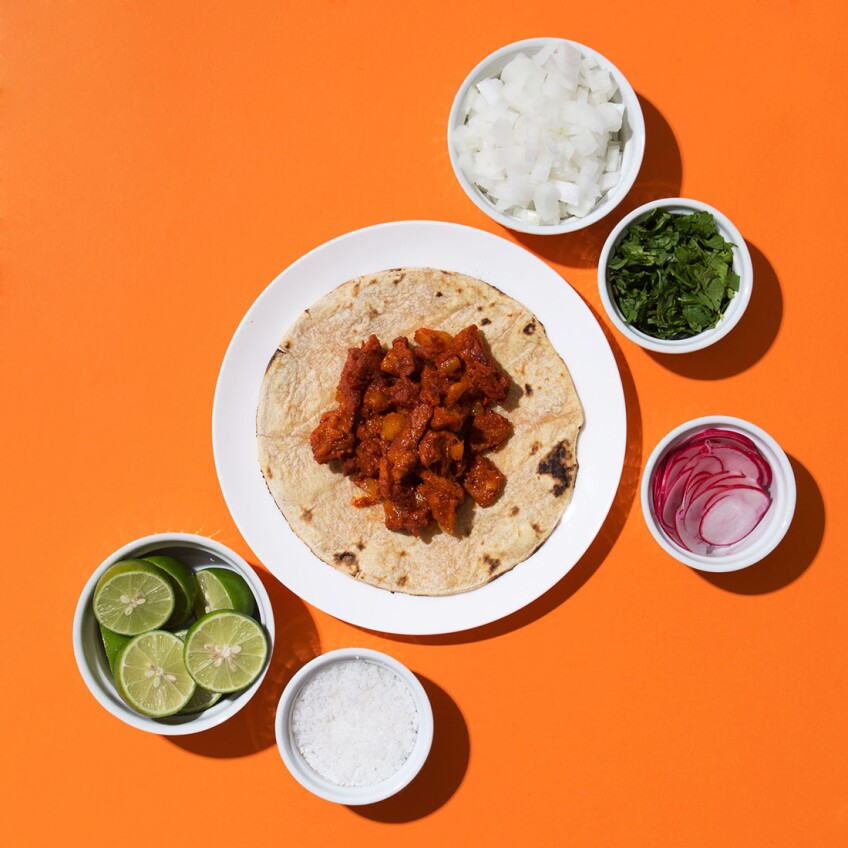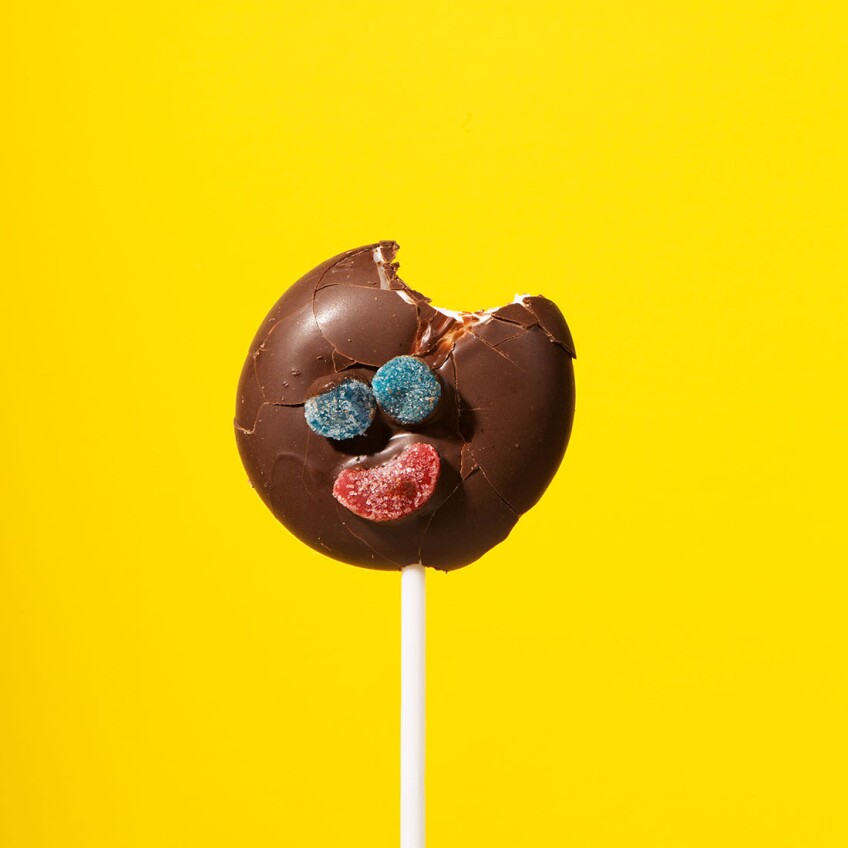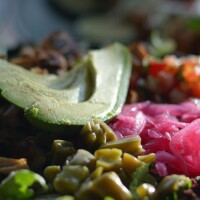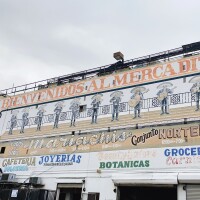These Minimalistic Photographs Redefine the Way Mexican Food is Presented
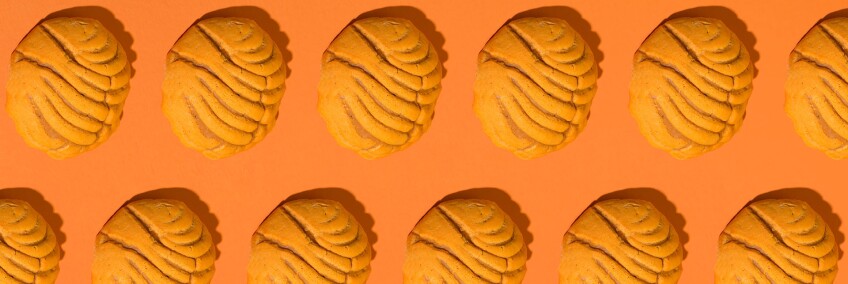
Buttery, dome-shaped Mexican conchas typically look more or less the same online — they’re photographed on bakery trays, on colorful decorative plates, in rustic baskets.

So it’s startling to see the way Esteban Castillo lays them out on his Instagram account, Chicano Eats. He lines up diagonal golden rows against a flat, orange background, like a squadron of soldiers. It looks like a wallpaper. Or something you’d see in a museum. And why not? Why can’t the concha be plucked out of its ethnic context and celebrated in the same way you might see a doughnut, cookie or cupcake?
For the past eight months, Castillo has been raising these kind of questions through Chicano Eats, his blog and Instagram. His photos and recipes quietly tap into mainstream beliefs about Mexican food being cheap, exotic or lacking depth — and underscore that the complex cuisine has more personality than most people realize.
Castillo says he started the blog after being frustrated by the lack of Mexican and Mexican-American voices online. He wanted a blog that reflected and celebrated his identity, which was part Mexican, part American and queer.

“You see a lot of dishes being made by people outside of our culture, where they’re adding aguacate, or lime juice, or something more generic and they’re slapping a label on it and calling it Mexican,” says Castillo, who lives in Riverside. “I wanted to reclaim that and take hold of the narrative that’s being pushed on us.”
For a self-taught cook — Castillo works in marketing and communications by day — his recipes are exceedingly detailed and creative. For Mango con Limón Peeps with Tajín, he made his own marshmallows and tried to mimic the flavors he remembered as a kid, eating chopped fruit covered in lime juice and chile powder. His recipe for Tejuino — a traditional Mexican beverage of corn masa and piloncillo — calls for fermenting the masa for two days, in a pot covered with cheesecloth. The result looks classy and refreshing on his blog, served in a curved glass with a salted rim and jagged chunks of ice.
Castillo, the son of undocumented immigrants, struggled with his identity while growing up, so part of his goal with his blog is to prove that Mexican culture has value. As a kid in Santa Ana, he got in trouble at school for speaking Spanish and he listened to others make insulting remarks about Mexicans.
“When I was younger, I’d be in the shower and try to scrub the color off of my skin because I didn’t want to be seen as this dirty Mexican,” Castillo says. “The way people would talk about Mexicans really affected me, and I really internalized that. It wasn’t until I was in high school that I really started to accept who I was and celebrate my culture.”
The blog’s minimalist aesthetic was inspired by his interest in Swiss graphic design and the Bauhaus school, an early 20th century German design school that emphasized geometric lines and simple, unadorned objects. Castillo currently cooks, styles and shoots all the photos himself, and he and his partner (who runs the food blog Wit and Vinegar) share a camera and some equipment. The bright, bold background colors — a nod to his queer identity, he says — come from poster boards purchased at Target.
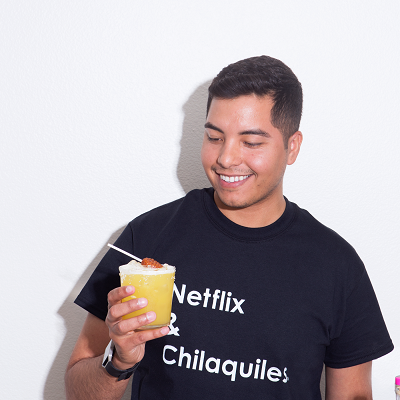
“I literally do this on our coffee table,” Castillo says. “We have our camera, our tripod and our strobe light for that effect.”
Bricia Lopez, a partner at Guelaguetza restaurant in Koreatown, said her PR manager tipped her off to Chicano Eats, and she immediately knew he’d be right for a series of sponsored posts on the company’s mole pastes. Castillo ended up creating a handful of recipes for Guelaguetza, including a mole brownie tart with milk chocolate ganache and honey mole-glazed chicken wings.
“I’ve never seen Mexican food portrayed in such a vibrant yet very simplistic way,” says Lopez, who also runs her own food blog. “It’s either very traditional or super contemporary. There was nothing that was fused together that had been done before.”
The blog is continuing to open other doors for him, too. He recently designed a series of desserts and a signature cocktail for an event at La Plaza de Cultura y Artes in downtown L.A. Among the things he served were: a Gansito Trifle (inspired by the iconic snack cake found at convenience stores across Mexico), and a Tepache mezcal cocktail, based on a traditionally Mexican fermented pineapple juice. He even got a few requests from customers to cater their private events.
Castillo says he’s still mulling over what’s next. His dream is to have his own design studio someday.
“Honestly, I don’t really know where this is going to lead,” he says. “I’m open to wherever this goes.”

